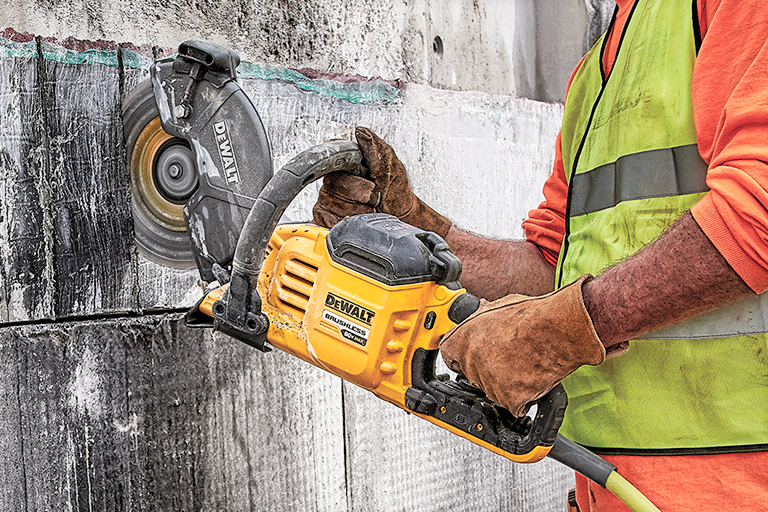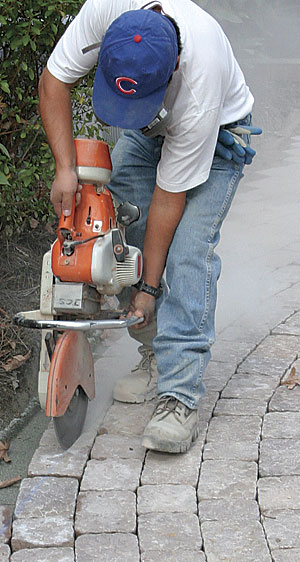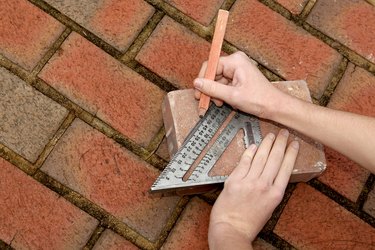
When working with interlocking pavers in any landscaping project, the use of a masonry saw is almost always required. This is because most shapes and patterns require some cutting especially on the borders in order for everything to come together into one coherent shape. Here are some tips on how to cut nice clean straight lines.
Basic Safety Tips
First some basic safety tips when cutting concrete pavers. It is important to always wear eye protection either in the form of a face shield or goggles. One should always use hearing protection as the saws are very loud. If dry cutting, one should wear proper filters to avoid breathing in the concrete dust, which can cause scar tissue in the user’s lungs, similar to asbestos. When wet cutting, the user should avoid coming in contact with the wet slurry as it is extremely caustic with pH levels similar or worse than lye. Rinsing with a weak acid such as a vinegar solution or with plenty of water is recommended.
Back to Basics
Going back to primary school days, we use our trusty pencil and straight edge. By placing the brick over the desired spot, one can mark the desired shape and size of the brick. Then by bringing the brick to a solid flat surface, one can begin cutting the brick.
The disadvantage of doing it this way is that for any landscape involving over 1 or 2 adjoining bricks, the lines will not match up exact and on very close inspection, will look unpleasant.
To solve this, we can bring the saw to the pavers. With the pavers laid in the ground in the desired final location, the landscaper needs to bring the saw down to “score” the bricks all in one go. This way it will be one coherent line and the edge will look exceptionally clean.
To “score” a brick means to cut into it just barely to make a small groove, enough that when the scoring is complete, the bricks can be taken out and the saw blade will have an existing guide to cut into on a tabletop like surface.

Note about Angle Grinders
For many homeowners, the thought of investing in a concrete or mason saw seems unnecessary. They are expensive and can take up a lot of room, especially the table top varieties. As a result, many people opt to use angle grinders. Angle grinders can work but have two main disadvantages. Since they are not designed to cut thick pavers, their cuts are often inferior. The edges will not be as clean and will seem rough. Additionally, because the radius of the blade is so much less than a mason saw, it is often not possible to cut through anything over 2” thick. A hammer and chisel may be used to complement the angle grinder but this can crack the brick itself as well as causing very rough cuts.
Final Word
Cutting pavers is in many ways like cutting lumber. The tools used are different and the material is more brittle. However, when it comes to marking lines, a straight edge and a pencil are your best friends. When cutting for larger patterns that require more coherent lines, scoring all the bricks or stones at once is often a far superior method that will give the finished product a more professional look.
